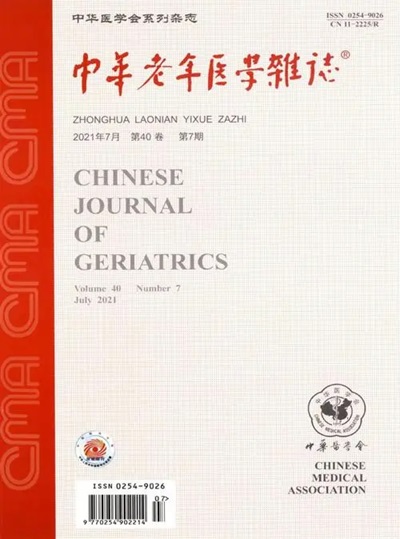Correlation between frailty status and anticoagulation therapy in elderly patients with atrial fibrillation
引用次数: 0
Abstract
Objective To investigate the correlation between frailty status and anticoagulation therapy in elderly patients with atrial fibrillation. Methods A total of 131 atrial fibrillation inpatients in our hospital aged 70 years and over with a mean age of(77.4±6.4)years were enrolled from January 2017 to June 2018 in this retrospective study.According to the state of anticoagulation therapy at discharge, patients were divided into the anticoagulation group(n=67)and the non-anticoagulation group(n=64). Data including gender, age, N-terminal pro-brain natriuretic peptide(NT-proBNP), glomerular filtration rate(eGFR), the type of medication, HAS-BLED(Hypertension, abnormal renal/liver function, stroke, bleeding history or predisposition, labile international normalized ratio, elderly, drugs/alcohol concomitantly), CHA2DS2-VASc scores, Charlson comorbidity index and clinical frailty scores(CFS)were recorded and compared between the two groups.Spearman correlation was used to analyze the correlation between frailty degrees and program of anticoagulant therapy.Two-class Logistic regression models were used to analyze the related factors for programs of anticoagulant therapy. Results The incidence of the frailty syndrome was 56.49% in 131 elderly patients with atrial fibrillation.Compared with the anticoagulation group, non-anticoagulation group showed that the CFS score[(5.73±1.85)vs.(3.69±2.07), P 0.05). The correlation analysis showed that there was a negative correlation between the application of anticoagulants and CFS grade in elderly patients with atrial fibrillation(r=-0.138, P<0.05). Multivariate Logistic regression analysis showed that age, CFS score and the incidence of frailty state were risk factors in elderly atrial fibrillation patients without the anticoagulant therapy(P<0.05). Conclusions The incidence of frailty state in elderly patients with atrial fibrillation is high, and the proportion of patients receiving the anticoagulant therapy is low.Age and frailty may be the most important influencing factors for anticoagulant therapy.Therefore, it is of great significance to incorporate frailty assessment into the management of anticoagulant therapy in elderly patients with atrial fibrillation. Key words: Frailty; Atrial fibrillation; Anticoagulation老年房颤患者虚弱状态与抗凝治疗的关系
目的探讨老年房颤患者虚弱状态与抗凝治疗的相关性。方法选取2017年1月~ 2018年6月我院收治的年龄在70岁及以上、平均年龄(77.4±6.4)岁的131例房颤患者进行回顾性研究。根据出院时抗凝治疗情况将患者分为抗凝组(n=67)和非抗凝组(n=64)。记录两组患者的性别、年龄、n端脑利钠肽前体(NT-proBNP)、肾小球滤过率(eGFR)、用药类型、HAS-BLED(高血压、肾/肝功能异常、卒中、出血史或易感性、不稳定国际标准化比值、年龄、药物/酒精合并)、CHA2DS2-VASc评分、Charlson合病指数和临床衰弱评分(CFS)等数据并进行比较。采用Spearman相关分析虚弱程度与抗凝治疗方案的相关性。采用两类Logistic回归模型分析抗凝治疗方案的相关因素。结果131例老年心房颤动患者脆性综合征发生率为56.49%。与抗凝组比较,非抗凝组CFS评分[(5.73±1.85)比(3.69±2.07),P 0.05]。相关性分析显示,抗凝药物的应用与老年房颤患者CFS分级呈负相关(r=-0.138, P<0.05)。多因素Logistic回归分析显示,年龄、CFS评分、虚弱状态发生率是未接受抗凝治疗的老年房颤患者发生房颤的危险因素(P<0.05)。结论老年房颤患者虚弱状态发生率高,接受抗凝治疗的比例低。年龄和虚弱可能是抗凝治疗最重要的影响因素。因此,将衰弱评估纳入老年房颤抗凝治疗管理中具有重要意义。关键词:虚弱;心房颤动;抗凝
本文章由计算机程序翻译,如有差异,请以英文原文为准。
求助全文
约1分钟内获得全文
求助全文

 求助内容:
求助内容: 应助结果提醒方式:
应助结果提醒方式:


